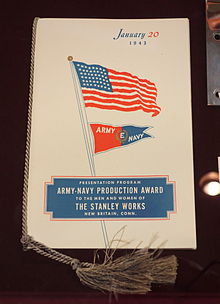
The Manhattan Project was a program of research and development undertaken during World War II to produce the first nuclear weapons. It was led by the United States in collaboration with the United Kingdom and with support from Canada. From 1942 to 1946, the project was under the direction of Major General Leslie Groves of the U.S. Army Corps of Engineers. Nuclear physicist J. Robert Oppenheimer was the director of the Los Alamos Laboratory that designed the bombs. The Army program was designated the Manhattan District, as its first headquarters were in Manhattan; the name gradually superseded the official codename, Development of Substitute Materials, for the entire project. The project absorbed its earlier British counterpart, Tube Alloys. The Manhattan Project employed nearly 130,000 people at its peak and cost nearly US$2 billion, over 80 percent of which was for building and operating the plants that produced the fissile material. Research and production took place at more than 30 sites across the US, the UK, and Canada.

Raymond Ames Spruance was a United States Navy admiral during World War II. He commanded U.S. naval forces during the Battle of the Philippine Sea, one of the most significant naval battles of the Pacific Theatre. He also commanded Task Force 16 at the Battle of Midway, comprising the carriers Enterprise and Hornet. At Midway, dive bombers from Enterprise sank four larger carriers of the Imperial Japanese Navy. Most historians consider Midway the turning point of the Pacific War.

Hawthorne Army Depot (HWAD) is a U.S. Army Joint Munitions Command ammunition storage depot located near the town of Hawthorne in western Nevada in the United States. It is directly south of Walker Lake. The depot covers 147,000 acres (59,000 ha) or 226 sq. mi. and has 600,000 square feet (56,000 m2) storage space in 2,427 bunkers. HWAD is the "World's Largest Depot". It is divided into three ammunition storage and production areas, plus an industrial area housing command headquarters, facilities, engineering shops, etc.

Joseph Mason "Bull" Reeves was an admiral in the United States Navy and an early and important supporter of U.S. Naval Aviation. Though a battleship officer during his early career, he became known as the "Father of Carrier Aviation" for his role in integrating aircraft carriers into the fleet as a major part of the Navy's attack capabilities.
The Picatinny Arsenal is an American military research and manufacturing facility located on 6,400 acres (26 km2) of land in Jefferson and Rockaway Township in Morris County, New Jersey, United States, encompassing Picatinny Lake and Lake Denmark. The Arsenal is the headquarters of the US Army Combat Capabilities Development Command Armaments Center. It is known for developing the ubiquitous Picatinny rail, as well as being the Army's center of expertise for small arms cartridge ammunition.

The S-50 Project was the Manhattan Project's effort to produce enriched uranium by liquid thermal diffusion during World War II. It was one of three technologies for uranium enrichment pursued by the Manhattan Project.
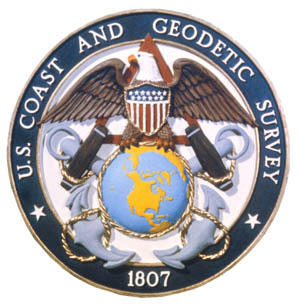
The United States Coast and Geodetic Survey, known from 1807 to 1836 as the Survey of the Coast and from 1836 until 1878 as the United States Coast Survey, was the first scientific agency of the United States Government. It existed from 1807 to 1970, and throughout its history was responsible for mapping and charting the coast of the United States, and later the coasts of U.S. territories. In 1871, it gained the additional responsibility of surveying the interior of the United States and geodesy became a more important part of its work, leading to it being renamed the U.S. Coast and Geodetic Survey in 1878.

The Main Navy and Munitions Buildings were constructed in 1918 along Constitution Avenue on Washington, D.C.'s National Mall as the largest of a set of temporary war buildings on the National Mall. Both buildings were constructed by the Navy's Bureau of Yards and Docks, with the United States Department of War occupying the Munitions Building. To make the buildings more resistant to fire, the buildings were constructed using concrete. With solid construction, the temporary buildings remained used long after the end of World War I.
Pontiac Assembly was one of four General Motors assembly plants in Pontiac, Michigan located along Baldwin Avenue. It served as the home factory for GM's Pontiac Motor Division since it was built in 1927. It was across the street from the currently operational Pontiac Metal Center, which was the original location for the Oakland Motor Car Company, which Pontiac evolved out of.

The yeoman rate is one of the oldest rates in the U.S. Navy, dating back to 1794. Historically, the Navy yeomen were responsible for keeping the storerooms for the ship's gunners, carpenters and boatswains. With the transition from sail to steam, yeomen were assigned to the ship's engineers. In the modern Navy, a yeoman is an enlisted service member who performs administrative and clerical work.
Camanche (ACM-11/MMA-11) was the name given in 1945 to the former U.S. Army Mine Planter (USAMP) Brigadier General Royal T. Frank (MP-12) while in naval inactive reserve more than ten years after acquisition of the ship by Navy from the Army in 1944. The ship had previously been classified by the Navy as an Auxiliary Mine Layer (ACM) and then Minelayer, Auxiliary (MMA). The ship was never commissioned by Navy and thus never bore the "USS" prefix.

Levin Hicks Campbell Jr. was a lieutenant general in the United States Army. He was the 16th Chief of Ordnance for the U.S. Army Ordnance Corps.

William Carleton Watts was a rear admiral in the United States Navy, who served in the Spanish–American War, World War I, and World War II.
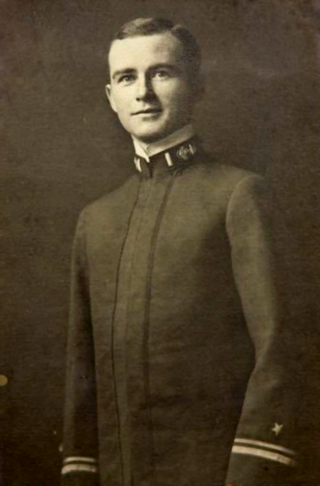
William Pigott Cronan was a United States Navy captain who served as the 19th Naval Governor of Guam. During his tenure in the Navy, he became decorated, commanded a number of ships, and came to be known as "the most popular man in the Navy". He participated in the Battle of Santiago de Cuba during the Spanish–American War. In 1903, he gained some attention for his participation in the rescue of a Venezuelan fisherman off the coast of La Guaira under bad conditions. Both the Venezuelan government and navy command praised him for the way he carried out the operation. He became a national news story in 1907 while serving aboard USS Connecticut during a training operation. When a gun nearly exploded because of leaking powder; he shoved his hand into the gun's breechblock, preventing the explosion and losing two of his fingers in the process.

Ross Gunn was an American physicist who worked on the Manhattan Project during World War II. The New York Times described him as "one of the true fathers of the nuclear submarine program".
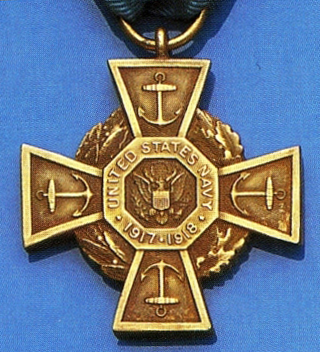
The Tiffany Cross Medal of Honor arose immediately after World War I, as the US Navy decided to recognize via the Medal of Honor two manners of heroism, one in combat and one in the line of a sailor's profession. The original upside-down star was designated as the non-combat version and a new pattern of the medal pendant, in cross form, was designed by the Tiffany Company in 1919. It was to be presented to a sailor or Marine who "in action involving actual conflict with the enemy, distinguish[es] himself conspicuously by gallantry and intrepidity at the risk of his life above and beyond the call of duty and without detriment to his mission." This pendant became the Tiffany Cross.

American women in World War II became involved in many tasks they rarely had before; as the war involved global conflict on an unprecedented scale, the absolute urgency of mobilizing the entire population made the expansion of the role of women inevitable. Their services were recruited through a variety of methods, including posters and other print advertising, as well as popular songs. Among the most iconic images were those depicting "Rosie the Riveter", a woman factory laborer performing what was previously considered man's work.
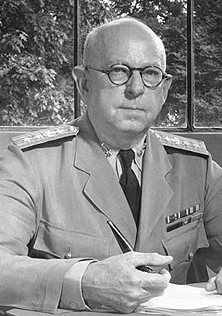
Harold Gardiner Bowen Sr. was a United States Navy Vice admiral, former head of the Office of Naval Research and a mechanical engineer. He was the recipient of the Distinguished Service Medal and he was the namesake of USS Bowen. His son Harold G. Bowen Jr. also became a Vice Admiral, known for his involvement in the inquiry into the Pueblo incident.
The Ames Project was a research and development project that was part of the larger Manhattan Project to build the first atomic bombs during World War II. It was founded by Frank Spedding from Iowa State College in Ames, Iowa as an offshoot of the Metallurgical Laboratory at the University of Chicago devoted to chemistry and metallurgy, but became a separate project in its own right. The Ames Project developed the Ames Process, a method for preparing pure uranium metal that the Manhattan Project needed for its atomic bombs and nuclear reactors. Between 1942 and 1945, it produced over 1,000 short tons (910 t) of uranium metal. It also developed methods of preparing and casting thorium, cerium and beryllium. In October 1945 Iowa State College received the Army-Navy "E" Award for Excellence in Production, an award usually only given to industrial organizations. In 1947 it became the Ames Laboratory, a national laboratory under the Atomic Energy Commission.

John Drake Hoffman was an American chemist and author who was awarded the Soldier's Medal, the United States Army's highest award for an act of valor in a non-combat situation, and the only one awarded to a member of the Manhattan District. After the war he worked for the National Bureau of Standards, becoming the director of its national measurements laboratory. He was a professor and director of the engineering materials program at the University of Maryland from 1982 to 1985, director of the Michigan Molecular Institute, and a professor of materials science and engineering at Johns Hopkins University.


